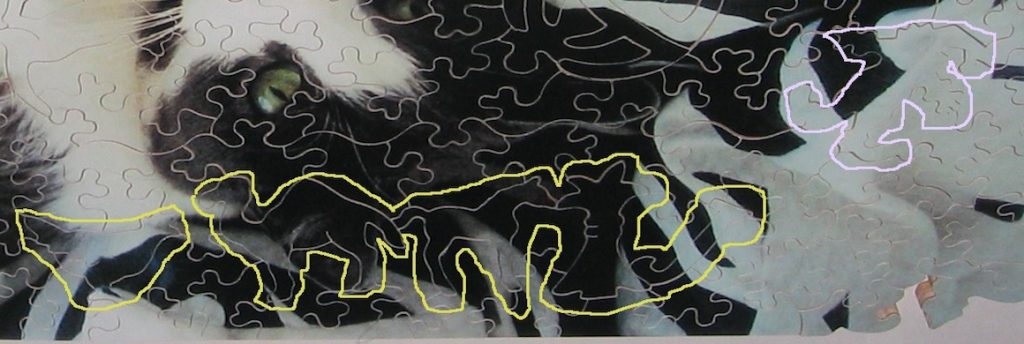Not unlike his Green Mountain State neighbors Bernie and Ben & Jerry’s, Stave Puzzles’ co-founder and self-described “chief tormenter” Steve Richardson makes a compelling argument for abandoning the well-trodden post-business school path for a slower, more scenic route—albeit one with a byzantine road.
The Philadelphia Inquirer’s Richard Wolkomir described Richardson in a 1991 profile as a “50-ish former computer analyst [who] wears aviator glasses and a genial grin.” Don’t be fooled, Wolkomir warns. “This is Mr. Diabolical himself.”
According to a 1986 People Magazine profile, Richardson grew up the “son of an insurance man in Attleboro, Massachusetts,” just 20 minutes north of Providence. After graduating with an MBA from the Ross School of Business at University of Michigan, Richardson dove immediately into the corporate sector as a consultant, working for a “large NJ accounting firm.”
But the bureaucracy of the corporate world quickly wore Richardson’s patience thin. As he told People back in 1986: “I’m a high-energy guy and I’m dying behind this wheel. My mind was going numb.”
Instead of looking for another corporate consulting gig, he and his family “fled the urban rat race in the late ‘60s” to take a job at a proto-startup in Hanover, NH. In an interview with the Chicago Tribune in 1986, Richardson recalled: “I’m sort of a corporate dropout who came to the North Woods and said to hell with the business world.”
After he was unexpectedly laid off in the early ‘70s, Richardson and his family opted for an even slower pace of life, setting up shop in Norwich, VT (population: 3,414). The slow pace of life seemed to inspire Richardson, who quickly partnered with designer Dave Tibbetts on a game design venture—a lifelong hobby.
The duo then underwent several lean years before they randomly “got a phone call from a Bostonian who wanted a wooden jigsaw.” The Bostonian offered Richardson $300 that altered the name of the game. Richardson and Tibbetts quickly discovered a “high-end niche market” for handcrafted wooden jigsaw puzzles.
Since 1974, Richardson and Stave Puzzles have been crafting what Smithsonian magazine calls the “Rolls Royce of Puzzles.” According to a 2011 Boston Globe profile, each puzzle is “crafted from five-ply, cherry-backed wood” by human hands, one piece at a time.
The Stave company bio elaborates, but the process is so deceptively simple, their description reads like a haiku: “No computers, no high-tech. One saw, one cutter — that’s it.” Stave “now employs 25 people, including local artists and puzzle cutters, marketing and administrative staff.”
Tibbetts eventually jumped ship and, according to the Inquirer, “sold Richardson his share of the company and started another one. (He’s now a leading designer of children’s puzzles.)”
Despite—or perhaps in spite of—the deceptive simplicity of the Stave Puzzles design, the jigsaws are notoriously difficult to put together. The unifying theme, according to an old Philly Inquirer interview with Richardson, is “to make a puzzle that’s possible to do but that nobody can do.” Forbes notes that “Stave rates its puzzles by difficulty on 1-5 lightning bolt scale, with 5 reading What part of ‘impossible’ don’t you understand?”
According to Forbes, the puzzle industry credits Richardson with inventing “Trick Puzzles,” which can encompass “swappable pieces that fit perfectly in more than one place or straight edged pieces that go inside the puzzle, fake corners, no corners, and so on.”
Richardson told the Boston Globe in 2011, “Our clients are very bright and they’re not used to getting tweaked. But we just love to tweak them.” The Inquirer cuts to the chase: “Richardson’s forte… is addiction, malediction and masochism.”
A Forbes profile from 2011 notes that “Queen Elizabeth II has given them as gifts. Bill Gates is a repeat customer. Barbara Bush is a fan.” Richardson told the Boston Globe, “We sell to the Rockefellers, the Duponts, the Phippses, the Mellons, you name it.”
According to the Chicago Tribune, Stave Puzzles sells $150,000 worth of puzzles “in a good year.” Richardson told People, “I’m not obsessed with piling up millions in the bank. I just love to give people a million dollars’ worth of fun.”
He told the Chicago Tribune, “This is one of the last of the old-fashioned crafts that is still surviving. We just want to stay here and to do our things for our puzzle friends.”
